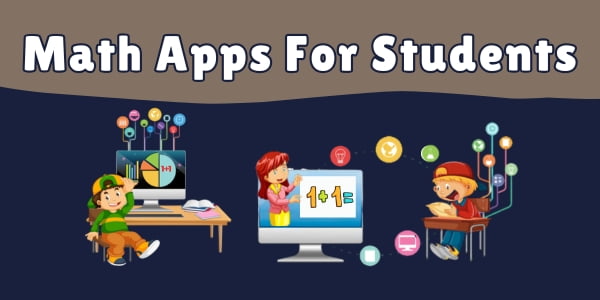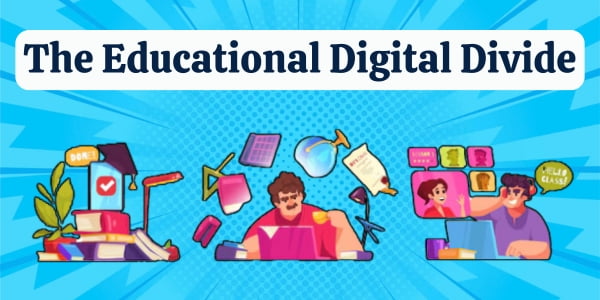Navigating the World of Math Apps: Comprehensive Guide for Students and Educators
In an era where technology intersects with every aspect of our lives, the educational landscape is not left behind. Math, a subject that has traditionally been challenging for many students, is being revolutionized through the use of apps. For both students and educators, navigating this world of math apps can be a daunting task.
This guide aims to show how to effectively choose and use these tools to enhance mathematical understanding and engagement.

Understanding the Need for Math Apps
The first step in navigating the world of math apps is understanding why they are necessary. In traditional classrooms, students often struggle with abstract mathematical concepts, finding them irrelevant to their daily lives.
Math apps bridge this gap by offering interactive, engaging, and practical ways to learn math, much like Mathnasium math tutors do with personalized instruction. They also provide personalized learning experiences, a luxury not always available in a conventional classroom setting.
Selecting the Right Math App
With countless math apps available, choosing the right one is crucial. Here are some factors to consider:
Educational Value: Look for apps that align with the curriculum and educational standards. The content should be accurate, age-appropriate, and challenging enough to stimulate learning.
User Experience: The app should have an intuitive interface, making it easy for students to navigate. A good math app should be engaging but not overly distracting.
Feedback and Reporting: Apps that provide feedback and track progress are beneficial for both students and educators. This feature helps in identifying areas of strength and weakness.
Customization: The ability to tailor the app to meet individual learning styles and levels is essential. This ensures that all students can benefit from the app, regardless of their proficiency in math.
For Students: Making the Most of Math Apps
As a student, math apps can be more than just homework helpers. They can be tools for mastering concepts and developing a love for math.

Regular Practice: Consistency is key to learning. Set aside regular time to practice math using these apps. This helps in reinforcing concepts learned in class.
Explore Beyond the Syllabus: Use math apps to explore topics beyond your syllabus. This not only broadens your mathematical knowledge but also fosters a deeper interest in the subject.
Challenge Yourself: Many apps offer levels of increasing difficulty. Don’t shy away from these challenges; they are opportunities to improve your problem-solving skills.
For Educators: Integrating Math Apps into Teaching
Educators play a crucial role in guiding students on how to effectively use math apps. Here are some ways to integrate these tools into teaching:
Supplement Traditional Teaching: Use math apps as a supplement to traditional teaching methods. They can be great for reinforcing concepts taught in class.
Assignments and Assessments: Consider using apps for assignments and assessments. This not only makes the process more engaging for students but also provides you with detailed feedback on their performance.
Collaborative Learning: Encourage students to use math apps in group settings. This fosters collaborative learning and helps students learn from each other.
Staying Updated and Evolving
The world of technology is ever-evolving, and so is the world of math apps. Staying updated with the latest developments is crucial. Subscribe to educational technology blogs, attend workshops, and participate in online forums. This will not only keep you informed about the latest and most effective apps but also about new teaching methodologies and trends.
Addressing the Challenges
While math apps have numerous benefits, there are challenges too. One major concern is the digital divide; not all students have equal access to technology. Educators need to be mindful of this and provide alternatives for those who might not have access. Additionally, it's important to ensure that screen time is balanced with traditional learning methods and physical activities.
The Digital Divide
One of the most significant challenges is the digital divide. Not all students have equal access to smartphones, tablets, or reliable internet connections. This disparity can create an uneven playing field, where some students can benefit from these advanced learning tools while others cannot.

To address this, schools and educational institutions could consider providing devices to students in need or setting up computer labs where these apps can be accessed. Additionally, choosing apps that have offline capabilities can be beneficial for students who face internet connectivity issues.
Screen Time and Health Concerns
Another concern with the use of math apps is the increase in screen time, which can impact students' physical and mental health. Prolonged exposure to screens can lead to eye strain, disrupted sleep patterns, and reduced physical activity. Educators and parents need to balance digital learning with traditional non-screen-based activities. Encouraging regular breaks, promoting physical exercises, and setting specific time limits for app usage can mitigate these concerns. It’s also important to teach students about responsible digital habits, such as taking regular breaks to rest their eyes and maintaining good posture.
Ensuring Quality of Content
The quality of content in math apps is crucial. Not all apps are created equal, and some may offer content that is not aligned with educational standards or is pedagogically unsound. Teachers and educators must thoroughly vet apps before recommending them to students. This involves checking the app’s alignment with curriculum standards, reviewing its teaching methodologies, and ensuring that the content is accurate and beneficial for learning.
Balancing Technology with Traditional Learning

Finally, while math apps are a powerful tool, they should not completely replace traditional teaching methods. The role of a teacher in explaining concepts, facilitating discussions, and providing emotional and educational support is irreplaceable.
A balanced approach that combines the interactive and engaging nature of apps with the personalized and human touch of traditional teaching can lead to a more comprehensive learning experience.
Conclusion
The world of math apps offers a dynamic and engaging approach to learning and teaching math. For students, these apps can make math more relatable and enjoyable. For educators, they offer innovative tools to enhance teaching effectiveness. By carefully selecting and thoughtfully integrating these apps into the learning process, both students and educators can greatly benefit from this technological advancement in education.
As we continue to navigate this exciting world, the key is to remain open, adaptive, and always focused on the ultimate goal: making math learning a fulfilling and enriching experience.
- ✔ Be Respectful
- ✔ Stay Relevant
- ✔ Stay Positive
- ✔ True Feedback
- ✔ Encourage Discussion
- ❌ Avoid Spamming
- ❌ No Fake News
- ❌ Don't Copy-Paste
- ❌ No Personal Attacks


